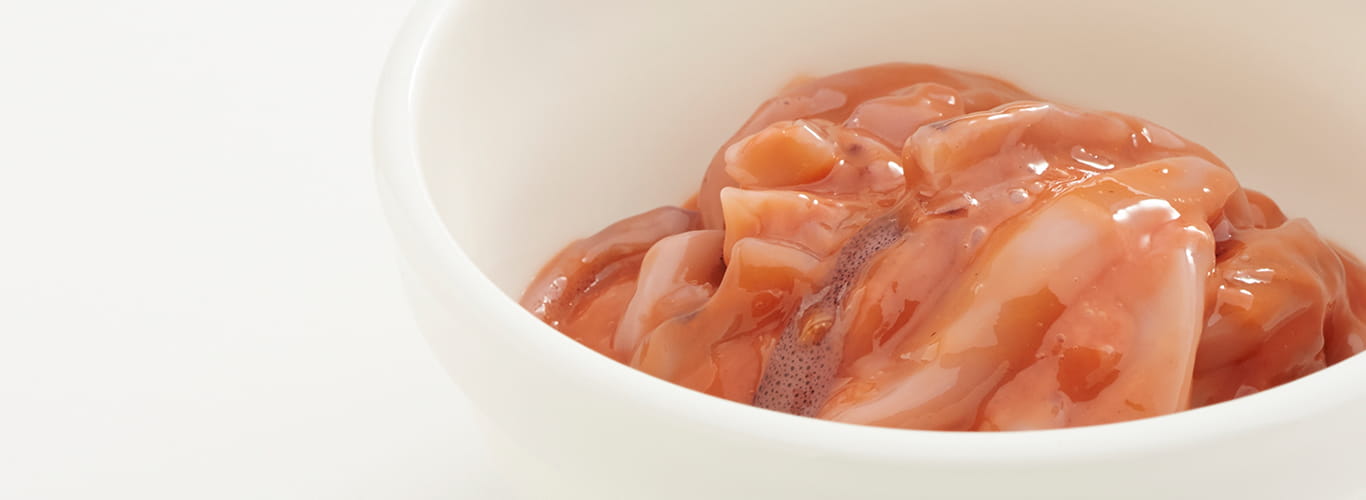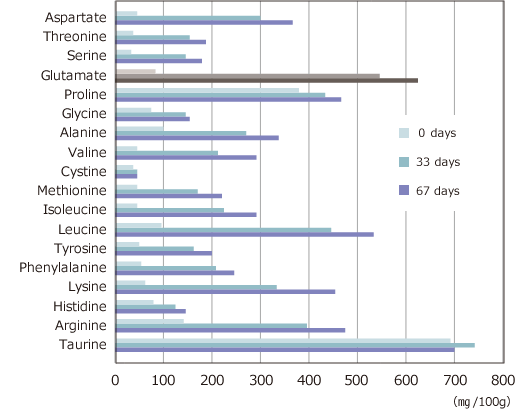Salted squid is one of the traditional Japanese fermented foods. It has strong saltiness and umami, a sticky texture and characteristic flavor. The Japanese eat it as an appetizer and on rice.
A popular method to prepare salted squid: Cut the squid in round slices with the skin still on. Add its innards and 10~20% salt. Mix them well. Cover them up in a container and keep at room temperature for
about one month to ferment. Enzymes in innards autolysis (ferment) amino acids and increase free amino acids, thus making them delicious. With such a high saltiness, the enzymes are active and advance
autolysis.
Furthermore, thanks to the high saltiness, decomposition is prevented even at room temperature. The latest trend, in which less saltiness is preferred, makes producers modify the activeness of the water and so
forth and keep it in cold storage to decrease the risk of decomposition.
The change in quantity of free amino acids in salted squid fermentation is shown in the graph.
In the graph, amino acids except taurine increase with fermentation. The growth rate in 33 days (1 month) under formation is much higher than the following 34 days (1 month). The umami substance glutamate
grows 6. 5 times more in 33 days and 7.4 times more in 67 days. Besides being eaten as a rice topping, it is used as a seasoning for pasta and soup instead of anchovies.
Try making use of umami in fish that are of Japanese origin.
Source : Fujii Tateo “Shiokara, kusaya, katsuobushi” (Koseisha Kouseikaku)
Change in free amino acids in salted squid




